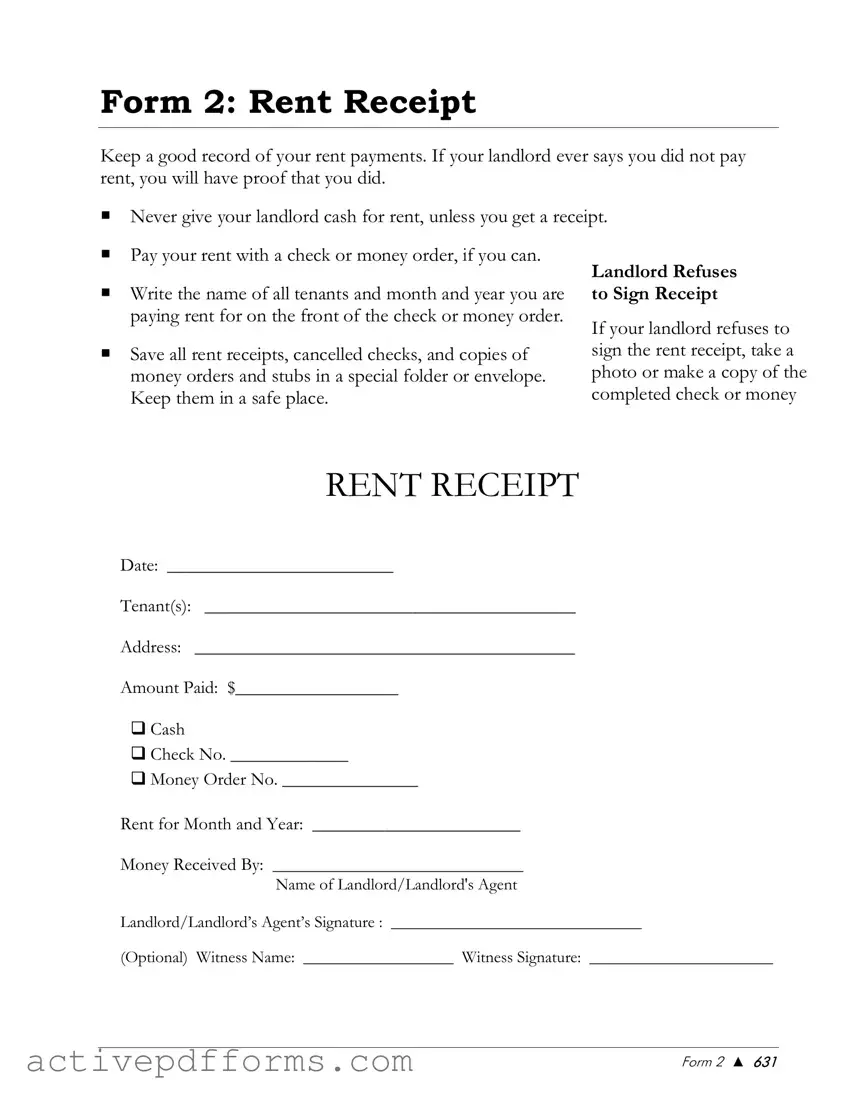When it comes to managing rental transactions, a rental receipt serves as an important document for both landlords and tenants. Here are answers to some common questions regarding the rental receipt form.
- What is a Rental Receipt?
A rental receipt is a document provided by the landlord or the landlord's agent to a tenant once rent has been paid. It records the date, the amount paid, the payment method, and the period the payment covers. It also includes the names and signatures of the landlord or agent and, optionally, a witness.
- Why is a Rental Receipt important?
This document is crucial for several reasons. It acts as proof that the tenant has paid the rent, preventing any future disputes over payments. For landlords, it's a record of income received. It can also be necessary for tax purposes and bookkeeping for both parties.
- Is a Rental Receipt legally required?
The requirement for providing a rental receipt varies by jurisdiction. In some areas, landlords are required by law to provide a receipt when rent is paid in cash. Even when not legally required, it's best practice to provide a receipt for any type of payment.
- What should be included in a Rental Receipt?
A comprehensive rental receipt should include the date of payment, the tenant's name(s), the rental property address, the amount paid, and the payment method. It should also indicate the rental period covered by the payment, and include the name and signature of the person receiving the payment, as well as a place for a witness's name and signature if applicable.
- What if the payment is made in installments?
For payments made in installments, a rental receipt should be provided for each individual payment. Each receipt should specify the amount paid towards the total due and clearly note the installment it represents.
- Can a digital receipt be used instead of a paper one?
Yes, digital receipts are increasingly accepted and can be preferable for ease of storage and retrieval. However, ensure that all relevant details are included, and that the digital receipt can be easily accessed by both parties in the future.
- How should a Rental Receipt be stored?
Both landlords and tenants should keep rental receipts for at least the duration of the lease term, though it's advisable to keep them for longer to address any potential legal or tax implications. These documents can be stored physically in a safe place or digitally in secure cloud storage.
- What if a landlord refuses to provide a Rental Receipt?
If a landlord refuses to provide a receipt, especially when required by law, the tenant should document the request and any payments made, including banking records or mail receipts. They might also want to seek legal advice to understand their rights and potential actions.
- Does signing a Rental Receipt have legal implications?
When a landlord or their agent signs a rental receipt, it becomes a legally binding document that acknowledges the receipt of rent from the tenant. This can be used in legal proceedings to prove that payment was made and received, offering protection to both parties.
